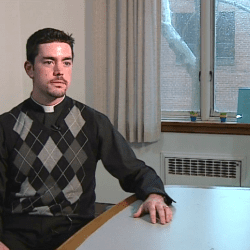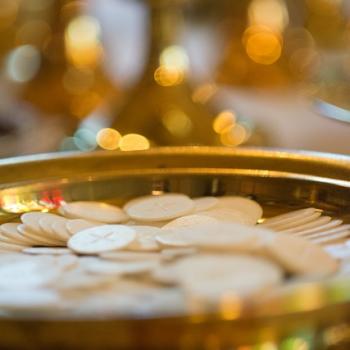The cardinal archbishop of Boston last night spoke of the “four kisses” a priest bestows: on the altar, on the book of the Gospels, on the people of God, and on the crucifix on Good Friday.
Here’s part of his homily:
The celebration of Mass always begins with a priest drawing near to kiss the altar. This liturgical custom dates from the first centuries of the Church.In our tradition the altar is a symbol of Christ, who is the rock, the cornerstone on which our Church is built. We describe Christ as being the priest, the victim, and the altar.Hence, when the priest is about to kiss the altar, he is kissing Christ. The same gesture is repeated at the conclusion of the Eucharist.The priest must be the friend of the Bridegroom, John the Baptist said: “I am not the Messiah, I am but the friend of the Bridegroom.” Yes, Jesus is the Bridegroom, never the widower. He does not exist separate from his Bride, the Church. Like John the Baptist, the priest must be the friend of the Bridegroom.The basis for our ministry in life has to be our friendship with Christ. Kissing the altar cannot be a formalistic or empty gesture. It must betoken our attachment to Christ, our loyalty to him, our friendship.In the liturgy of St. John Chrysostom before receiving Communion, the priest prays: “Of thy mystic supper receive me today, O Son of God, as a partaker; for I will not speak of the mystery to thine enemies; I will not kiss Thee as did Judas; but as the thief, I will confess Thee: “Lord, remember me in thy kingdom.”Judas’s kiss was a lie. It did not betoken friendship and love for Christ, but rather love of power and money. The authentic priestly kiss is one that betokens self-emptying and renunciation for the sake of the Beloved. I always like to say that poverty does not always lead to love. But love always leads to poverty. Our love of Christ must lead us to embrace his kenosis.As we renew our priestly vows today, let us be mindful of how these promises can deepen our friendship with Jesus. Our fidelity to prayer and to our commitment to celibacy can draw us closer to Christ, the High Priest and Bridegroom. Ironically enough, in today’s world where fewer people are getting married, more people attack the Church’s practice of celibacy.Often times in our culture the avoidance of marriage is based on a will to live for oneself and therefore is a no to the bond of marriage. Celibacy is meant to be the opposite: it is a definitive yes. It is to give oneself into the hands of the Lord. And therefore, it is an act of loyalty and trust, and that also implies the fidelity of marriage. Celibacy is a sign of the presence of God in the world, a reminder that God is to be loved above all else. The pastoral life of the Church has benefited greatly from the generous availability of men and women who have embraced a vocation of celibacy.
Read it all. It’s worth it.












